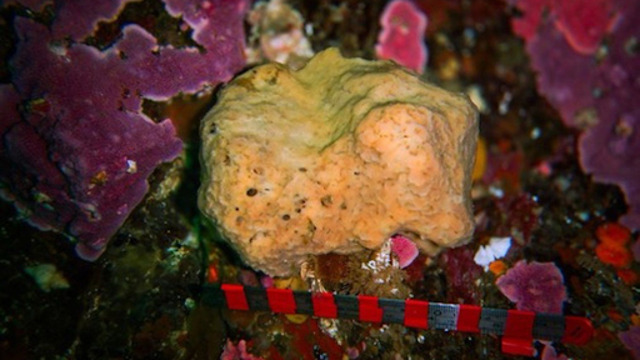
A sea sponge named Belinda, pictured underwater in a handout from Ocean Networks Canada, has been the subject of a study revealing that these creatures have the ability to sneeze. The research, conducted off the coast of British Columbia, sheds light on the sponge’s unique behavior. The Canadian Press
A fascinating study on the behavior of sea sponges off the coast of British Columbia has revealed that these marine creatures exhibit a sneeze-like response, much like humans, to clear debris. The research, led by Sally Leys, a professor at the University of Alberta, focused on the sponge's actions over four years, using video footage captured by eight cameras installed on the ocean floor by Ocean Networks Canada.
The footage revealed that the sea sponge, while filter feeding, performs regular contractions to expel accumulated debris. These "sneeze-like" actions, which can last up to a day, are part of the sponge’s method of cleaning itself when dirt becomes an irritant. As Leys explained, when dirt lands on the sponge, it must expel it, wrapping it in mucus before releasing it. The process is slower than a human sneeze but serves a similar purpose in clearing unwanted material from its system.
Interestingly, the size of the sponge influences the speed of the sneeze. Smaller sponges take about 40 minutes to an hour to expel debris, while larger sponges, like one named "Belinda," can take an entire day. Belinda, the focus of the study, is about the size of a human fist and is described by Leys as "a pretty active critter." Though the sponge may appear motionless to a diver, the long-term footage revealed how the sponge moves and responds in ways that would otherwise be unnoticed.
The study spanned several years, with researchers tracking the sponge’s behavior through daily, seasonal, and annual changes. Between 2012 and 2015, the team captured hundreds of hours of video footage of sponges located 25 meters underwater off Vancouver Island. After reviewing this data for nearly a decade, the research shed light on how the sea sponge reacts to its changing environment. The sponge exhibited a surprising annual behavior—contracting to half its size and entering a dormant state during the winter months, despite not having muscles or a nervous system.
Leys highlighted that this "innate response" to environmental changes occurs without the need for a nervous system. As food becomes scarcer in the winter, the sponge's body shrinks and becomes dormant. This finding opens up fascinating questions about how the sponge can shrink in response to less food and how it survives without a nervous system.
The sneezing behavior was primarily observed during the summer months when an increase in phytoplankton blooms raised the amount of particulates in the water, prompting the sponge to regain its shape. Studying these behaviors will give researchers more insight into how sea sponges adapt to their environments, especially in the face of climate change.
This research is the longest continuous study of sea sponges in their natural habitat. Although the cameras were removed in 2015, divers reported that Belinda is still thriving and healthy at the site, with its original color restored. Leys hopes that ongoing research will offer even more data on how sponges respond to changing ocean conditions.
Looking ahead, Leys hopes to see the cameras reinstalled for long-term monitoring. A decade of continuous observation could provide a clearer picture of how sea sponges behave over time, which would help researchers understand how these animals interact with their environment and respond to global ocean changes.















